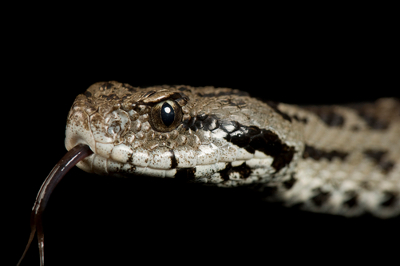Bolkar Viper Snake
Category: Snakes

Facts about Bolkar Viper snake. "Scientific name for Bolkar Viper snake is Montivipera bulgardaghica". Bolkar Viper snake is a Vipera type of poisonous snake that comes from the Viperidae family. The Bolkar Viper snakes are prevalent to the mounts of southern parts of Turkey, and they are also called by other names, such as Rock viper, Ottoman viper, coastal viper, Near East viper, Turkish viper, and Mountain viper. The Bolkar Viper snake varieties are largely found in the Bulgar Dagh Mountains, south central Anatolia and Nigde Province in Turkey. The Bolkar Viper snake variety is categorized as the least concern, and it is also recorded as a secluded variety. The Bolkar Viper lives in the mountain steppe and the Mediterranean scrubland homes. The snake can be seen in rural backyards, olive groves, in the middle of the ruins, and in cultivated lands.
Features of Bolkar Viper snake
Bolkar Viper is a terrestrial type of snake that attains a maximum body length, ranging from 27 5/8 inches to 37 13/32 inches (70 to 95 cm) when matured. Dorsally, the snake is white or grey in color, with a black color zigzag line. Melanistic snakes also exist, with keeled dorsal scales.
The Bolkar Viper snake is a poisonous snake whose elongated, hinged, empty fangs inject lethal toxins. Usually, the Bolkar Viper snakes are the trap predators and their mouth is capable of opening to approximately 180 degrees at the time of a strike. Strikes are chiefly targeted at the eye-catching prey, though they may as well, be used in self-protection. The Bolkar Viper snakes can be seen in unanticipated places, living in water, in trees and in the desert, but they mostly live on the earth. Astonishingly, Australia and Antarctica are the two continents where Bolkar Vipers cannot be found.
The Bolkar Viper as a Montivipera variety is composed under the high mountain bionetworks to become recognized as the only documented group in Turkey. The Bolkar Viper snakes are seldom found in nature, and they have a relatively big triangular-shaped head, with the slender neck. The top of the head of the Bolkar Viper snake variety is covered with tiny scales hull. They have 23 to 25 numbers of dorsal scales, and these scales are keeled. There are two slanting banding patterns and their head sides have a dark line. The stride pattern is brownish gray color on their tail.
Places stains may acquire the form of a diamond. The Bolkar Viper snakes have a pinkish gray color abdomen and there are extremely dark spots on it. The abdomen of the Bolkar Viper snakes offers them the required heat. These snake varieties are predominantly diurnal and they are usually nocturnal snakes. They live in higher altitudes, ranging from 1400 meters to 2000 meters (1530 to 2187 feet). There is no additional information regarding the ecosystem and biology.
Diet of Bolkar Viper snake
The Bolkar Viper snake mostly feeds on rodents and other small creatures and birds. Sometimes, they also feed on lizards.
Reproduction of Bolkar Viper snake
Usually, the breeding season of Bolkar Viper snakes commences in May and continues until September. The environment that is being offered to the female Bolkar Viper snakes makes them to give birth to 15 offspring. However, sometimes the female Bolkar Viper snakes give birth to offspring that ranges between 2 and 15.
Though the lifespan of the Bolkar Viper snake is not known in the wild, in the captive, they live up to 16.4 years.

 Back To Category Snakes
Back To Category Snakes